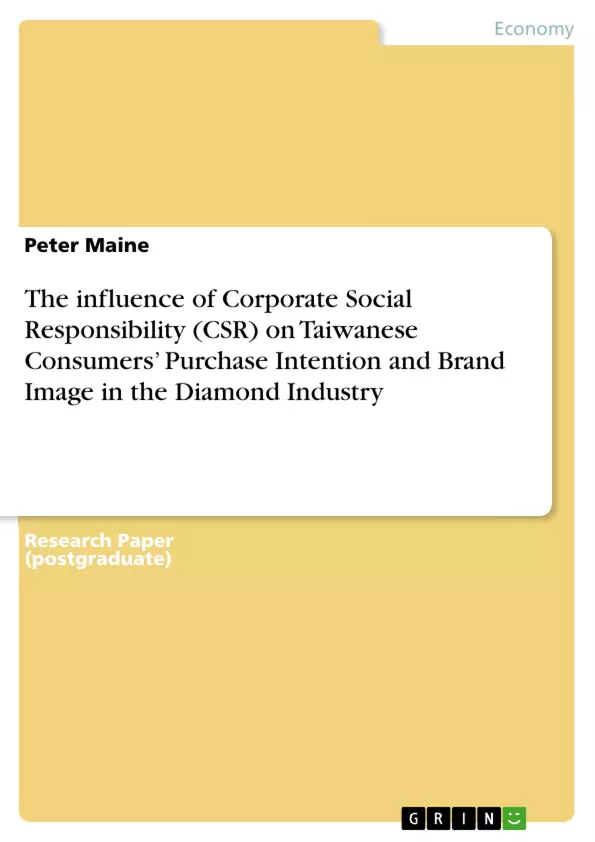In spite of the pessimistic worries of the global economy, in 2011 the global diamond industry performed successfully beyond expectation. A total of 124 million carats of rough diamonds, which is worth of $15 billion, were excavated (AWDC, 2013). According to the industry consulting organization, Bain & Company (2013), “those stones were worth $24 billion after moving through the chain of dealers, cutters and polishers, on their way to making diamond jewellery worth $71 billion at retail”. They also reported that compared to 2010, the global diamond sales significantly increased by 18% to $71 billion, close to the 2007 peak of $73 billion before the crisis. IDEX (2013) and Tacy LTD (2013) indicated that the majority of growth contributed to the mounting demand from Chinese and Indian markets. De Beers, which is reviewed in this proposal as an example of the world’s leading diamond company for more than a century, reached their second highest level of sales ever to $6.5 billion in 2011.
In the 1990s an issue of “conflict diamonds” or “blood diamonds” was heatedly debated across the globe. The diamond industry encountered the crisis from their diamond sourced countries. In several politically unstable African countries, such as Angola, Sierra Leone, Liberia, the Democratic Republic of the Congo, the diamond mines were under control of the military as a means to finance their military power. With the media‘s widespread coverage and the movie “Blood Diamond”, the transactions between diamond buyers and the military, although not all from such illegal channels, were regarded as intensifying violent tribal conflict. Consequently, the reputation of the diamond industry was blackened (The Kimberly Process, 2013; Pauwelyn, 2003; Worldbank.org, 2013). In response to this situation, the Kimberley Process was organized in 2002. Under the auspices of the United Nations, The Kimberley Process Certification Scheme (KPCS) conducted a list of rules that every diamond trading country should obey: certification of rough diamonds is now required before being exported (Pauwelyn, 2003; Schefer, 2005). This is to "guarantee that their trade does not finance rebel activities" (The Kimberly Process, 2013).
Inhaltsverzeichnis (Table of Contents)
- Title and Introduction
- Title
- Introduction
- Literature Review
- Corporate Social Responsibility (CSR)
- De Beers Drivers to CSR Implementation
- CSR Pyramid for De Beers
- Categories of CSR
- Brand Image
- Definition of Brand Image
- The Impact of CSR on brand Image
- Purchase Intention
- Definition of Purchase Intention
- The Impact of CSR on Purchase Intention
- Research Aim and Objectives
- Research Aim
- Objectives
- Methodology
- Research Structure
- Hypotheses Development
- Questionnaire
- Question Design Draft
- Interview
- Data Analysis
- Difficulties and Limitations
Zielsetzung und Themenschwerpunkte (Objectives and Key Themes)
This research examines the impact of Corporate Social Responsibility (CSR) on Taiwanese consumers' purchase intention and brand image within the diamond industry. The study specifically focuses on De Beers, a leading diamond company, as a case study to explore the influence of CSR on consumer perceptions and purchase decisions.
- The role of CSR in shaping consumer perceptions of brands in the diamond industry.
- The impact of CSR on consumers' purchase intention for diamond products.
- The effectiveness of De Beers' CSR strategy in mitigating negative perceptions associated with the "blood diamond" controversy.
- The relationship between CSR and brand image in the diamond industry.
- The importance of ethical sourcing and sustainable practices in consumer decision-making.
Zusammenfassung der Kapitel (Chapter Summaries)
- Title and Introduction: This chapter provides an overview of the diamond industry, highlighting its growth and the challenges it has faced, particularly the "blood diamond" controversy. The chapter introduces the research focus on the influence of CSR on Taiwanese consumers' purchase intention and brand image.
- Literature Review: This chapter delves into existing literature on CSR, brand image, and purchase intention. It examines the concept of CSR, including the CSR pyramid, categories of CSR, and De Beers' drivers for CSR implementation. It also discusses the definition and impact of brand image and purchase intention, exploring their relationship to CSR.
- Research Aim and Objectives: This chapter outlines the research's primary objective, which is to investigate the influence of CSR on Taiwanese consumers' purchase intention and brand image in the diamond industry. It also presents specific research objectives that will guide the study.
- Methodology: This chapter describes the research methodology used to conduct the study. It outlines the research structure, hypothesis development, questionnaire design, interview procedures, and data analysis techniques.
- Difficulties and Limitations: This chapter discusses potential difficulties and limitations encountered during the research process, acknowledging factors that may have influenced the findings.
Schlüsselwörter (Keywords)
The key terms and concepts in this research include Corporate Social Responsibility (CSR), brand image, purchase intention, diamond industry, Taiwanese consumers, De Beers, "blood diamond" controversy, ethical sourcing, sustainable practices, and consumer behavior.
- Quote paper
- Peter Maine (Author), 2011, The influence of Corporate Social Responsibility (CSR) on Taiwanese Consumers’ Purchase Intention and Brand Image in the Diamond Industry, Munich, GRIN Verlag, https://www.grin.com/document/267607



